Netgear ReadyNAS RN202 2-bay NAS Review
by Ganesh T S on September 25, 2015 2:30 PM EST- Posted in
- NAS
- Storage
- NetGear
- Annapurna Labs
Multi-Client CIFS Performance for Professional Workloads
NAS units used in SMBs / SMEs need to provide good performance under heavy load from multiple clients. The SPEC SFS 2014 benchmark uses real-life workloads (just like Intel NASPT), but makes it easier for users to understand the benchmark results. This is achieved by using the concept of business metrics. Given a particular NAS unit, how many concurrently accessed databases can reside in it? How many IP cameras or video streams can be simultaneously recorded? To determine this metric, each load point is associated with a target required op rate. If the NAS under test doesn't meet that op rate, it is deemed as an 'invalid run'. SPEC requires all published benchmarks to follow certain strict rules - such as presented results having no invalid runs for at least 10 load points. Unfortunately, small-scale NAS systems with 7200 RPM drives can't meet these requirements, Hence, we can't officially publish SPEC SFS 2014 benchmark results for the evaluation of the Netgear ReadyNAS RN202.
Using a popular filer benchmarking program, we did play back multi-client real-world professional workload access traces on the NAS using up to 10 Windows 7 VMs. However, failing to meet the required op rate criteria at a particular load point made us stop the testing a couple of load points down the road. The Netgear ReadyNAS RN202 with two 7200 RPM hard drives in RAID-1 can support recording of more than 10 video streams, up to 3 databases and at the most, 2 virutal machines.
Database Operations
The Database Operations workload seems to get acceptable performance for up to 3 clients.The detailed metrics from our trace playback are available here
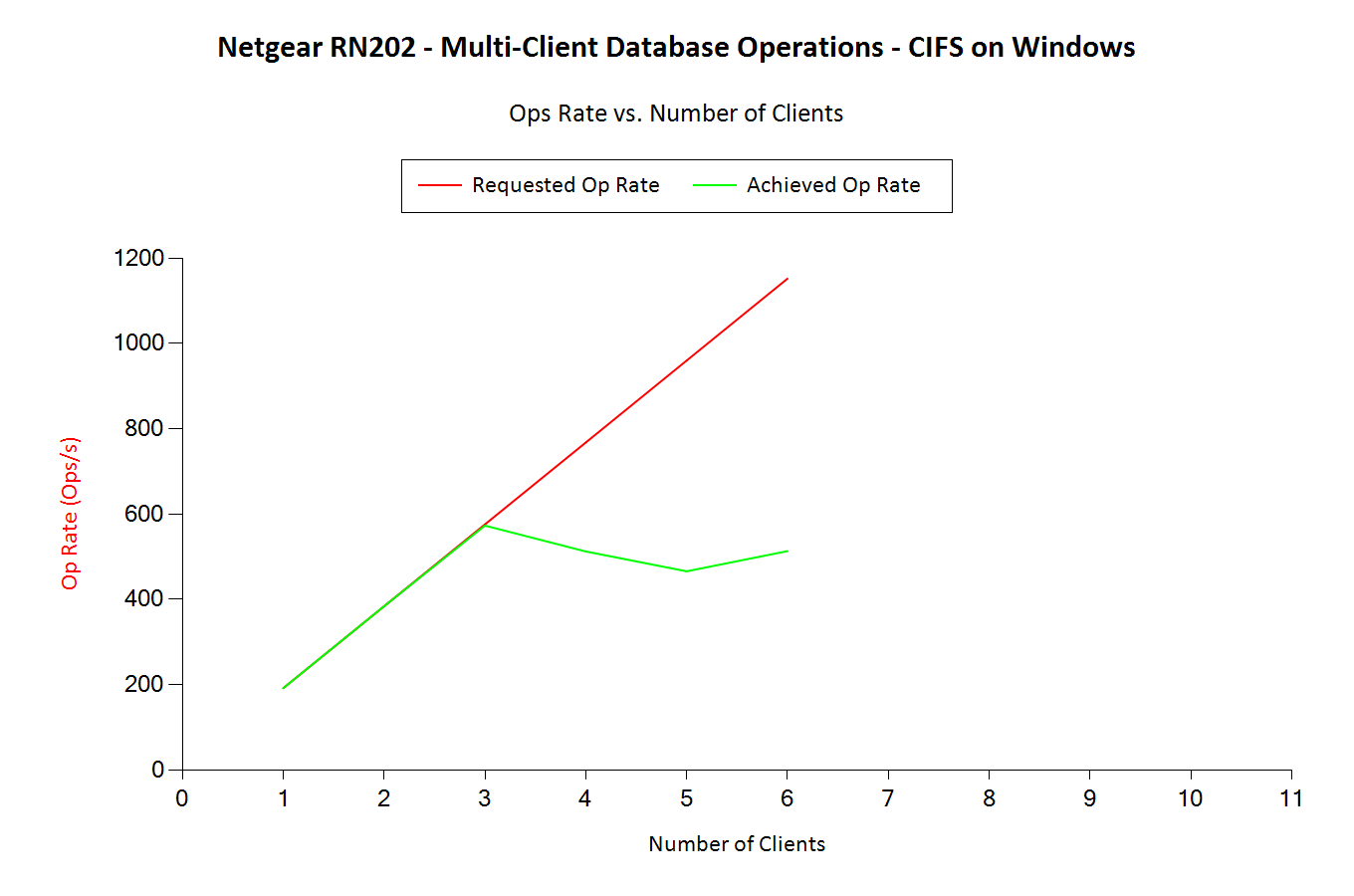
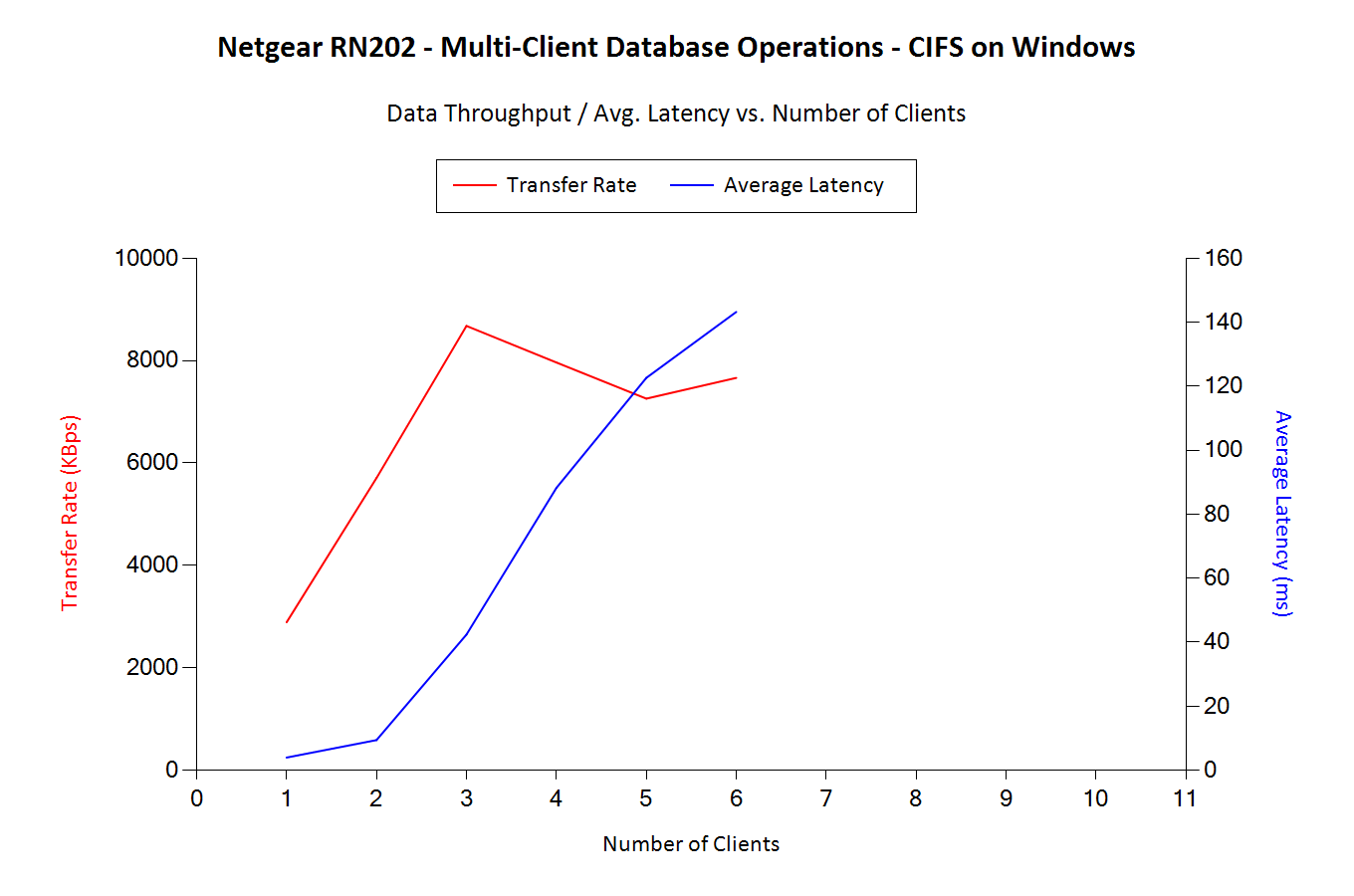
Software Builds
The Software Builds workload doesn't seem to get acceptable performance for even one client. The detailed metrics from our trace playback are available here
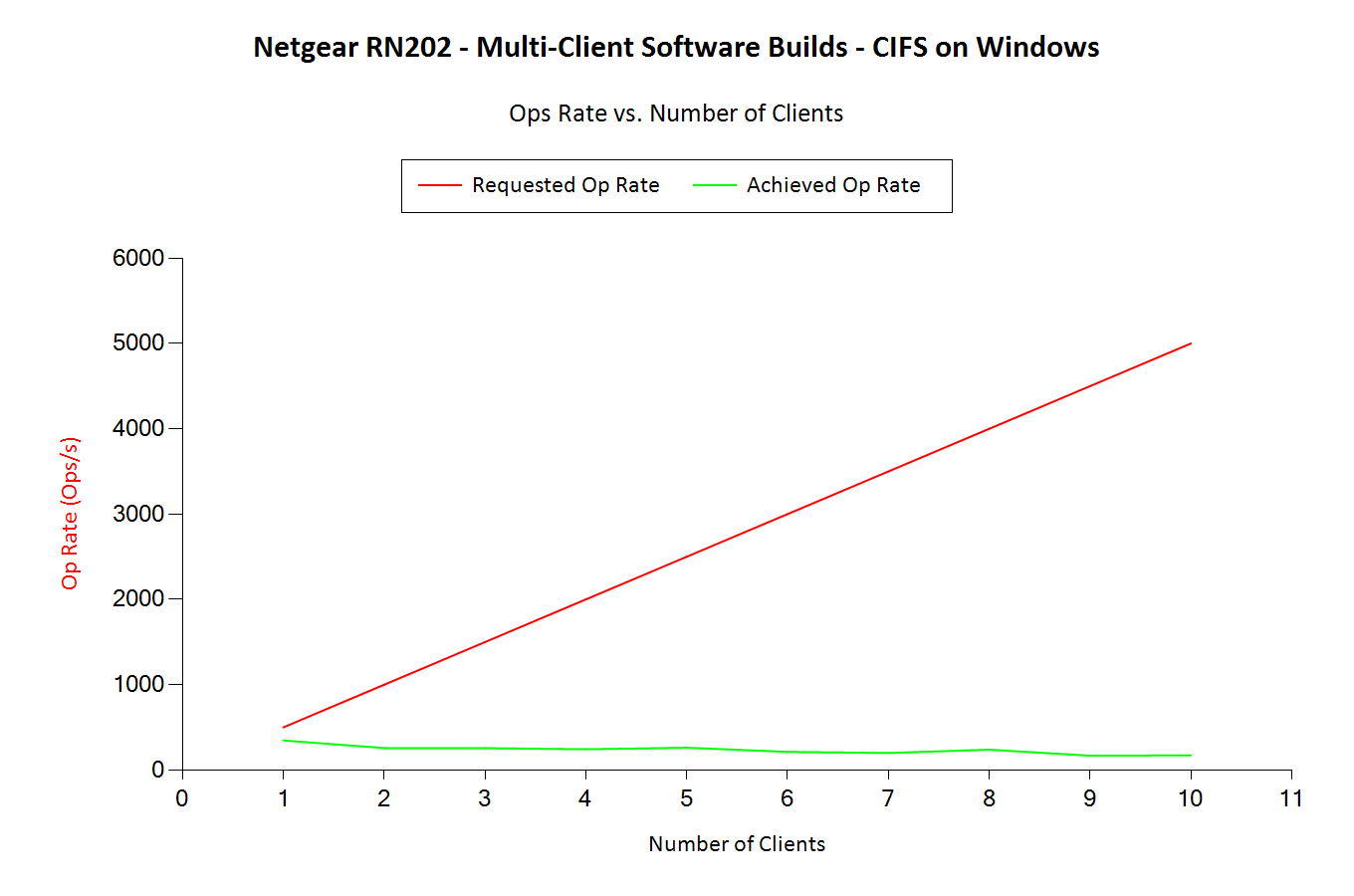
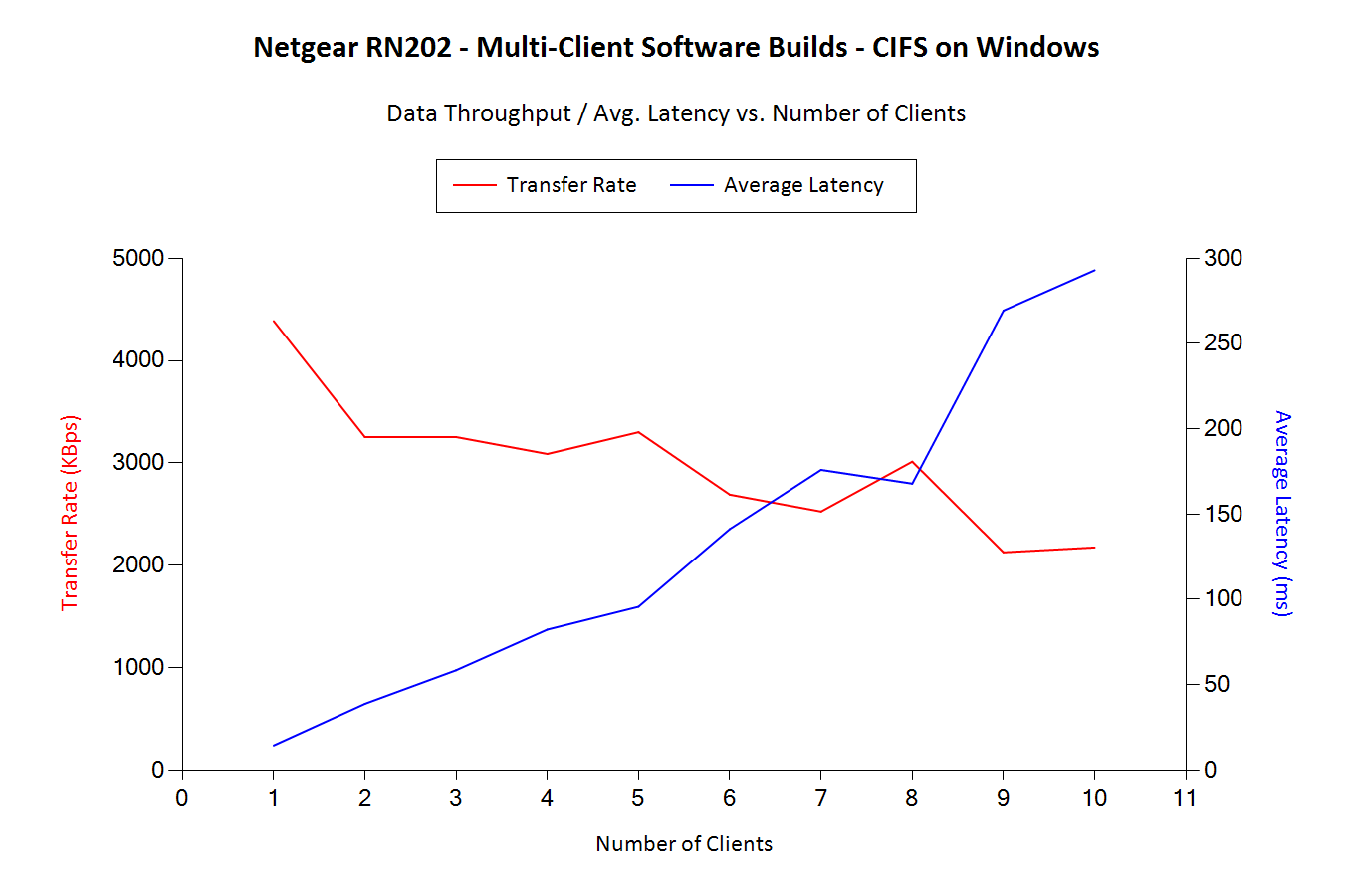
Video Recording
The Video Recording workload gets acceptable performance for up to 10 clients (the maximum we tested).The detailed metrics from our trace playback are available here
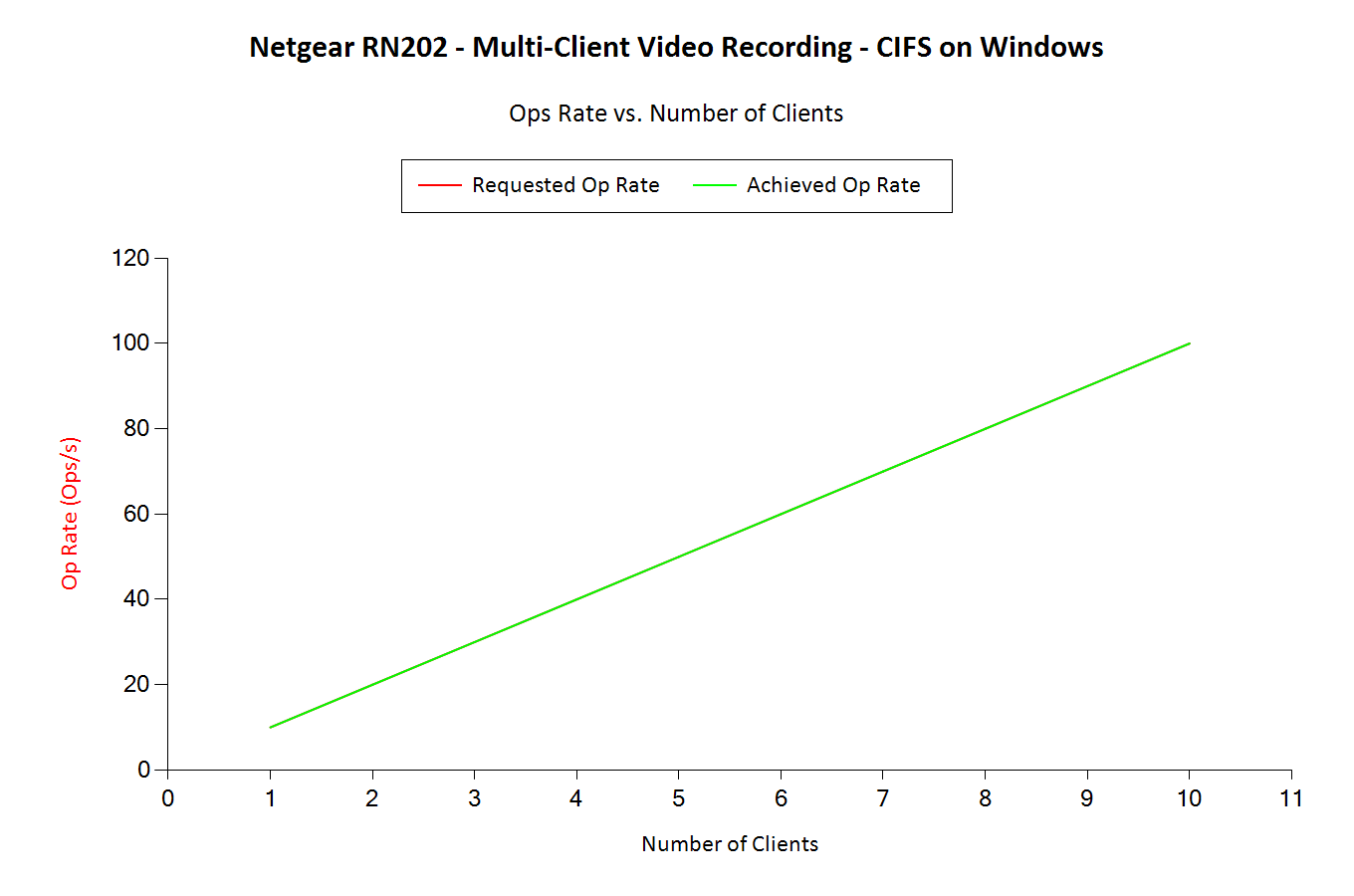

Virtual Desktops
The Virtual Desktops workload gets acceptable performance for up to 2 clients.The detailed metrics from our trace playback are available here
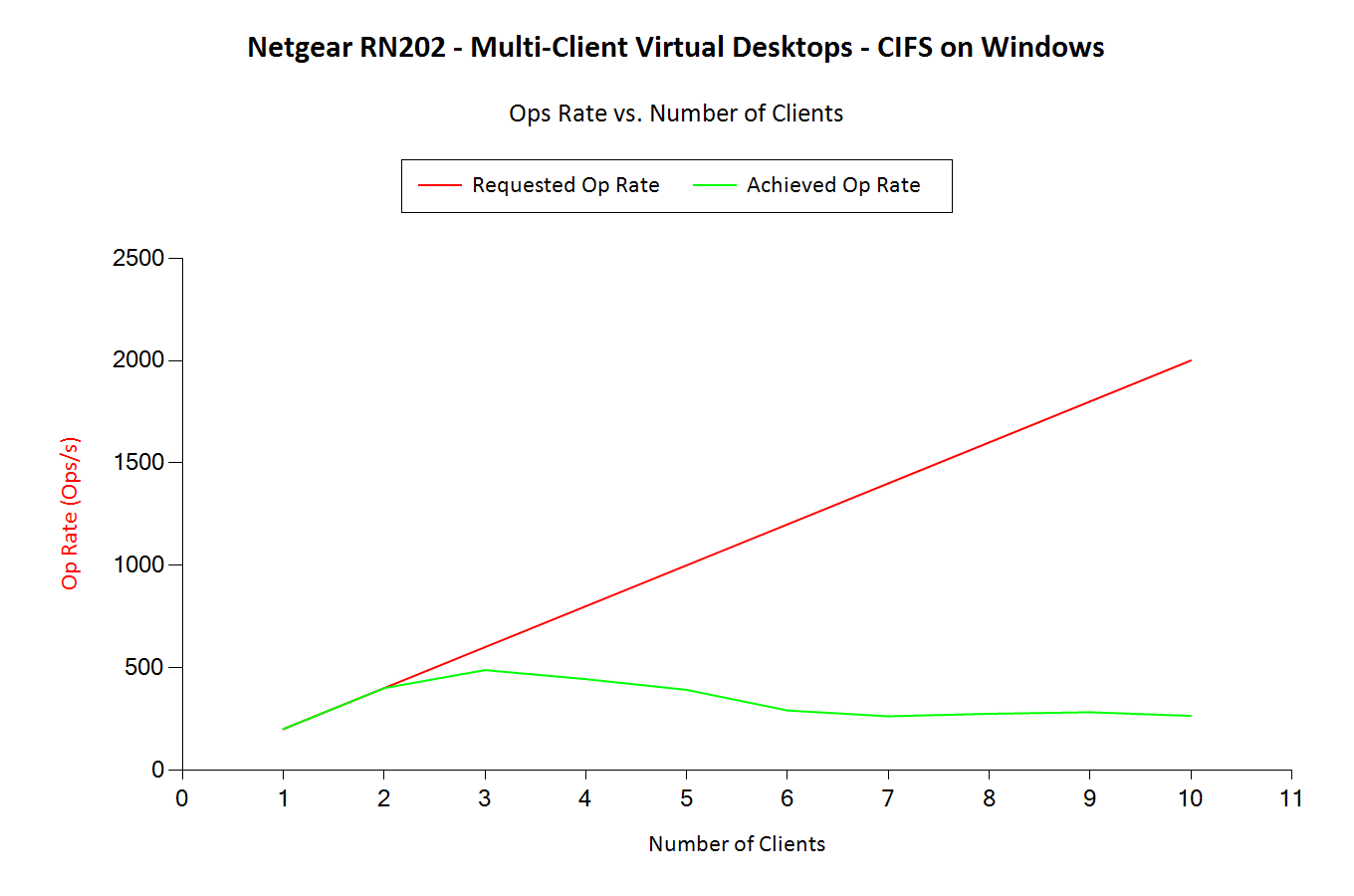
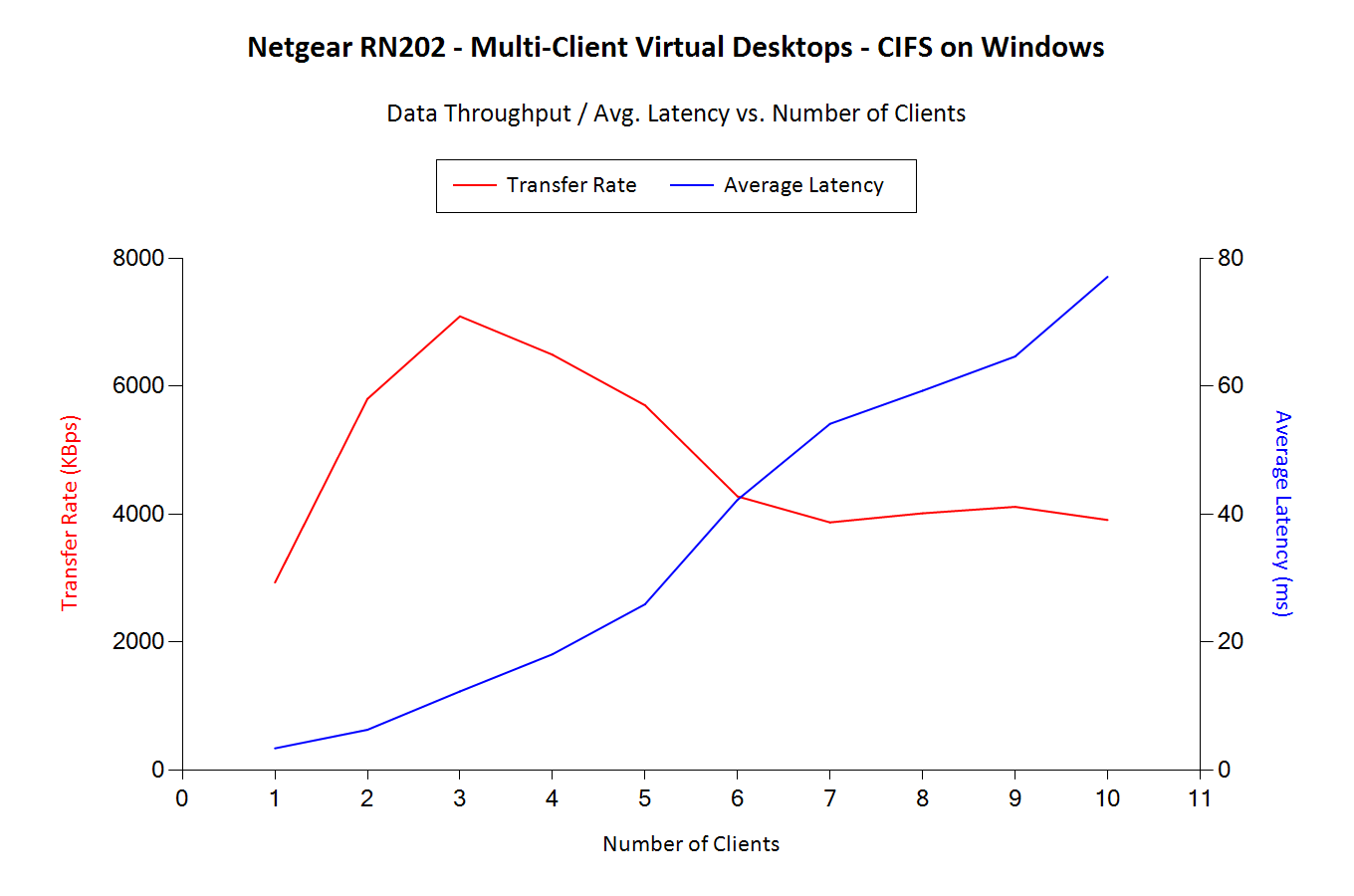










22 Comments
View All Comments
Duncan Macdonald - Friday, September 25, 2015 - link
Any NAS system that is limited to GbE or lower speed will give poor performance compared to even budget SSDs. (A GbE link can transfer about 100MB/sec after allowing for overheads - even low performance SSDs can do much better.) To beat locally mounted SSDs requires 10GbE or faster links. NAS systems are only useful for sharing files (slowly) to multiple computers or providing a backup far enough away to be unlikely to be affected by a common disaster (eg a house fire).As for NAS systems with 100Mb/sec links - AVOID (A USB 2.0 stick can be faster!!!)
BillyONeal - Friday, September 25, 2015 - link
But most of the NASes here are well below saturating GigE. A USB 2.0 stick can be faster in extremely limited scenarios but in most cases USB protocol overhead per transfer will make it worse for these kinds of workloads.Metaluna - Friday, September 25, 2015 - link
Where in the article did anyone suggest using a NAS as a performance alternative to locally attached SSDs? And as for NAS only being useful for sharing files to multiple computers, yeah, that's kind of the whole point for why local area networks and file servers were developed in the first place. That's like saying "A GPU is really only useful for displaying images on your screen"colinstu - Friday, September 25, 2015 - link
don't know what 'overheads' you're talking about but my Synology NAS and gb network regularly transfer at 115MB/s (114-116). Still not the max theoretical of 125MB/s, but closer to the max then '100'azazel1024 - Saturday, September 26, 2015 - link
No, max theoretical is not 125MB/sec. That is raw data rate, but you can't actually transfer 125MB/sec of usable data over a 1GbE link. SMB max rate is about 117.5MB/sec using 9k jumbo frames and about 115MB/sec using standard 1500MTU. That is covering TCP/IP overhead as well as SMB overhead. Smaller file will reduce the max by a bit no matter how fast the host and server are because of additional SMB overhead involved in "opening" and "closing" each file transfer.NAS are just fine, at least newer moderately fast ones. But, I do have to say, if running windows based clients...a windows based server, if you can't/don't want to move to 10GbE can be significantly higher performing than a NAS, even in "undemanding" file transfers. My G1610 based server manages 235MB/sec between it and my desktop, both running Windows 8.1. Dual GbE NICs combined with SMB Multichannel is a beautiful thing.
UtilityMax - Sunday, September 27, 2015 - link
NAS storage is slower than a directly attached storage! Shocking stuff! News at 11.GiE is is actually pretty acceptable for most applications, except a few specialist tasks. 10GbE can still be pretty expensive and power hungry.
UtilityMax - Sunday, September 27, 2015 - link
Sorry mean 10GbE instead of GiEWixman666 - Sunday, September 27, 2015 - link
So you decided that comparing apples and walruses is ok? A SSD and a 2 bay NAS have nothing in common for function, capacity, or price. Troll on, dude.johnny_boy - Thursday, October 1, 2015 - link
Any SSD system that is limited to SATA or even PCIE will give poor performance compared to even budget RAM disks. (A SATA link can transfer about blah MB/sec after allowing for overheads - even low performance RAM disks can do much better.) To beat locally mounted RAM disks requires bleek GbE or faster links. SSDs are only useful for reading and writing data.As for SSDs with blomps Mb/sec links - AVOID (A USB 3.0 stick can be faster!!!)
Wardrop - Friday, September 25, 2015 - link
Do the btrfs snapshots show up in Windows under the "Previous versions" tab?